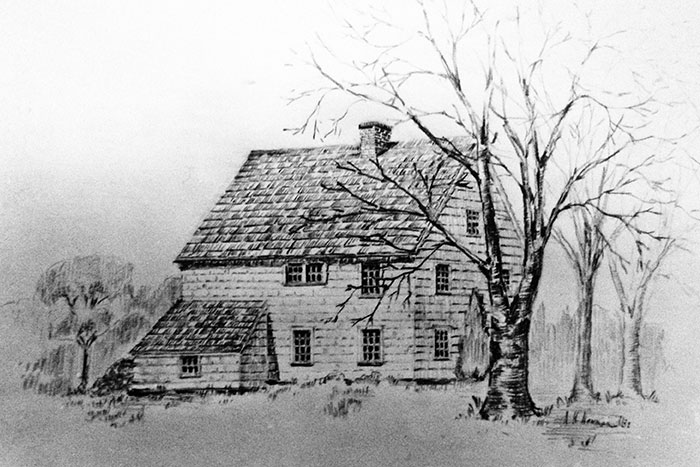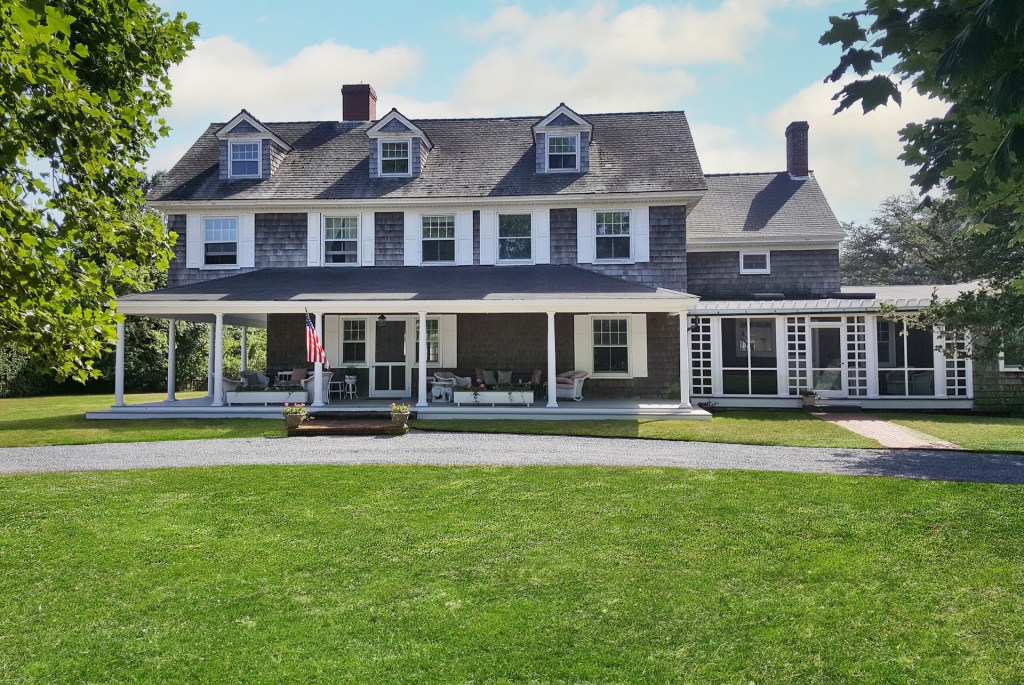House for $1: A 1679 Mecox Home Could Be Torn Down

Southampton Town was settled in 1640 by English settlers who came by boat from Lynn, Massachusetts. Four years later, some of these settlers moved on to Water Mill and Mecox and Bridgehampton. They numbered in the hundreds. They built homes here. They built wooden meeting halls and churches. These were among the first English settlements in the State of New York.
A man named Benjamin Haines, a wheelwright, is found in old records to have emigrated from Salem, Massachusetts to Mecox several years after that. He wasn’t an original settler. He was a newcomer. He shows up in old records as a resident here in 1667 to settle first in the North Sea Area and later near Kellis Pond. He would have been 24 years old when he arrived here. He bought a small part of a property subdivided in 1679 and built a house on it.
Nearly all the old homes built by early settlers are gone now. The few left, we treasure. They include the Halsey House in Southampton and the “Home Sweet Home” house in East Hampton.
It has now been learned that the home built by Benjamin Haines is still here. It is the “core” of a private residence at 849 Hayground Road, a home with two wings on it, one to the north and one to the south, both of which were built nearly 200 years after the original house.
This house has been recently sold for about $4 million by David Walentas. You will know it as part of “Two Trees,” the vast farm where polo matches in the Hamptons were held in recent years. Other parts of the farm have been either developed as residential sites or saved with agricultural conservation easements. But the farmhouse, the headquarters where David and his wife Jane have lived for the last 20 years, was sold for that price with only 2.5 acres of land out of the 115 acres that this farmhouse was originally part of.
David and Jane Walentas have built a new home on the ocean. They wanted to put this old farmhouse into good hands.
“I didn’t get anything in writing about saving this house,” Walentas said today in a phone call. “I was reassured by the buyer he intended to save it. But now, I’m told, he’s changed his mind. I suppose I really shouldn’t care. But I do. I’ve tried to work with the Town where we could have it moved to some of the acreage on the rest of the property. We could find a use for it. I think the Town means well. But they just get in their own way. And now I’m told that isn’t going to happen. There’s no building site available in the development. And nothing gets built on the easement. It needs to be saved. Maybe there’s something you could write in the paper. Your house for a dollar. Take it away.”
Frankly, I didn’t think this house was that old. It just looks like a big white colonial. In fact, much of it around the core was built and added on to in 1879 and 1910, old enough to be saved by themselves.
But 1879 and 1910 are one thing. There are a lot of old houses in town from that era that could be saved. But here is a colonial that was built when we were a British colony. This is a whole different story.
“There are four fireplaces in the old part,” Walentas told me. “One in each bedroom and one large one facing out into the living room on one side and the kitchen on the other.”
Yup. That’s how they built them back then. Very likely it has wooden pegs for nails.
And then there is this. During a renovation 20 years ago, the Walentases found a brass plaque on one of the original beams. The plaque says that James Haines restored and added onto this house in 1779 that was originally built by Benjamin Haines in 1679.
“How long do we have?” I asked Walentas.
“I think probably a year. I don’t think the new owner is in any hurry. I think if someone wants to pay a $1 and take it away, he’d be amenable to that.”
The Bridgehampton Museum thinks that this house was built in 1679 by Benjamin Haines. He had a son, Deacon James Haines, and there was a Lucius Haines and, in the census of 1800, a Col. David Haines. This part of Mecox was where salt hay found elsewhere in wetlands was taken by wagon to spread out to dry. Farming also went on here. There were very few homes north of the highway then. In all of Mecox where every home in the area is on an old map published in 1800, there are just two homes on Hayground Road. One was this one. On the Montauk Highway further into town were other homes and churches. None of the others have survived.
Since Colonel David Haines is listed in the census of 1800, I wondered if he’d fought in the Revolution that freed us from the English, but I could not find him. Back during the Revolutionary times, some local men joined the militias that formed in the different towns. I looked through the lists of those men in those militias. No Haines.
But particularly after the Battle of Long Island, where George Washington got beat and fled to Valley Forge, Pennsylvania, all of the East End was under the control of the British. British officers went around knocking on doors, asking people to sign a pledge to King George the Third. There’s no list of the names of the people in that, but there is a report to the King that about 350 people did that in Southampton Town and about 500 did in East Hampton, even though East Hampton is a smaller settlement.
One thing I thought that could be done with the historic part of the Haines House is to put it up on wheels and take it a few hundred yards to the Walentas’s property. He could park it there. Surround it with evergreen trees. Nobody would have to look at it. On wheels it’s not a house, it is a vehicle. Parked.
Walentas, who has, with his son, developed Dumbo in Brooklyn during the last 30 years, thinks in terms of making money. He’s listed now as a billionaire. But it is probably hard for somebody like him to think of spending money on something he’s now sold. It’s a stretch. Do it, David.
But my asking him to do that doesn’t really save it. In two generations, it could be sold anyway without the codicil and torn down. It needs a permanent solution.
Look at it this way. When this house was sold for $4 million a few months ago, the buyer had to pay about $100,000 in taxes to the CPF Preservation Fund. All that property up on Hayground will soon be fenced off with hedgerows. Even if saved there, nobody will see it. Instead, I propose the Town use the $100,000 to have the house moved where everyone can see it—to Main Street Bridgehampton, downtown. There is an old 1980s badly built modern structure next to the historic Nathaniel Rogers house, across from the Topping Rose House. This modern structure is quite small and flimsy, originally built around 1980 as a garden center. It was abandoned for about 20 years before it became used again as an annex for the Bridgehampton Museum archives. Tear down that nondescript building. Replace it with the Haines House, which could be towed over there. It would look majestic and beautiful there, as a combination historic house for visitors and archive annex upstairs.
Save the Haines House.



